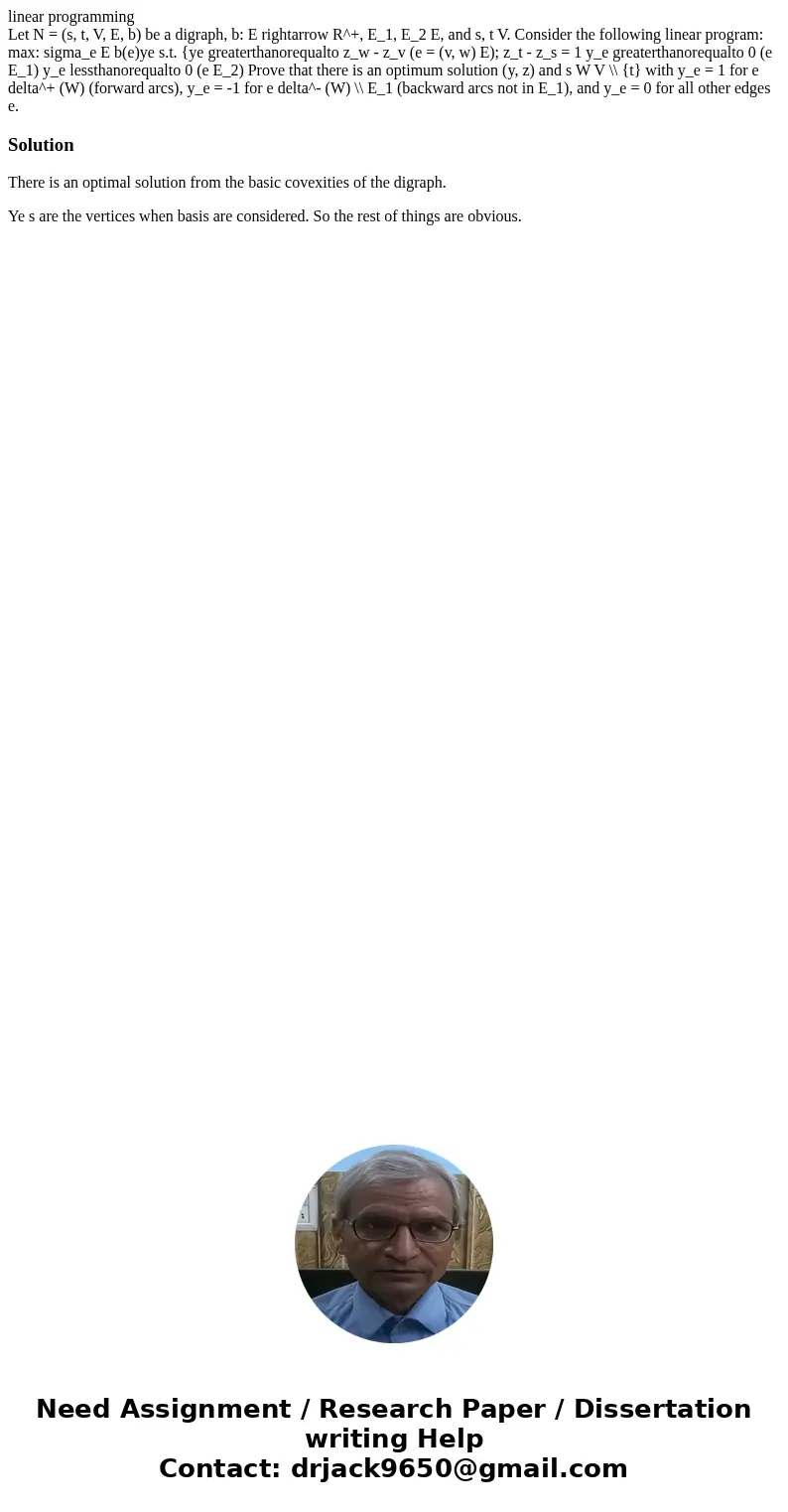linear programming Let N s t V E b be a digraph b E rightar
linear programming
Let N = (s, t, V, E, b) be a digraph, b: E rightarrow R^+, E_1, E_2 E, and s, t V. Consider the following linear program: max: sigma_e E b(e)ye s.t. {ye greaterthanorequalto z_w - z_v (e = (v, w) E); z_t - z_s = 1 y_e greaterthanorequalto 0 (e E_1) y_e lessthanorequalto 0 (e E_2) Prove that there is an optimum solution (y, z) and s W V \\ {t} with y_e = 1 for e delta^+ (W) (forward arcs), y_e = -1 for e delta^- (W) \\ E_1 (backward arcs not in E_1), and y_e = 0 for all other edges e. Solution
There is an optimal solution from the basic covexities of the digraph.
Ye s are the vertices when basis are considered. So the rest of things are obvious.

 Homework Sourse
Homework Sourse